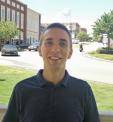High-quality content is your website’s most valuable asset. It turns your website into a resource that other people want to use, resulting in higher traffic. And as your website becomes more popular, search engines will take notice by ranking it higher in the search results. When writing articles, blog posts and other forms of content for your website, though, you should avoid making the seven following copywriting mistakes.
#1) Not Writing for a Specific Audience
Before writing new content for your website, ask yourself who’s most likely to read it. You can then create content that’s highly relevant and targeted to this audience. If you’re writing a blog post on how to choose a wedding dress, for example, it’s safe to assume that recently engaged women are your primary audience. On the other hand, if you’re writing a blog post on how to trim a beard, your primary audience is probably men who are interested in personal grooming. This information will allow you to include specific lingo, jargon and phrasing in your writing that resonates with your readers to improve engagement.
#2) It’s Too Short
Writing content for your website takes time. And the more words it contains, the longer it will take to write. If you’re willing to put forth the work, though, writing long content will help your website succeed. A SerpIQ study of the top-ranking web pages on Google found that pages ranking in the first organic position had 2,416 words on average. Even web pages in the 10th organic position had more than 2,000 words of content on average. These findings suggest that search engines like Google favor web pages with long-form content over short-form content by ranking them higher in the search results.
#3) The Wall of Text
Perhaps the most common copywriting mistake made by webmasters is creating a wall of text. If your content isn’t formatted with paragraph spacing and subheadings, it will look like a brick wall, with each word representing a brick. This is concerning because statistics show that the average visitor only reads 20 percent of the words displayed on a web page. With a wall of text, visitors are even more likely to abandon your website due to the monotonous layout of its text.
To keep visitors on your website, break up your content into several sections and define them with a relevant subheading. Within each section, create one or more paragraphs consisting of 100 to 300 words. For additional appeal, try including other formatting elements like bold or italicized letters. Following these tips will allow you to break your website’s content into multiple, small sections to avoid the dreaded wall of text.
#4) Copying Competitors’ Content
Imitation is said to be the sincerest form of flattery, but that doesn’t mean you should copy your competitors’ content. Content is considered a form of intellectual property (IP), so copying another website’s content without their permission is essentially theft. Online businesses will go after other websites that use their content by sending cease and desist orders and, if necessary, pursuing legal action in court.
Legality aside, publishing content that’s already found on a competitor’s website offers little or no value. Search engines index and rank the first web page that publishes a specific piece of content. If you copy a competitor’s article or blog post, it probably won’t appear on Google and Bing.
Furthermore, there’s no reason for users to visit your website if it features the same content as a competitor’s site. You can scan competitors’ content for inspiration, but don’t copy it. Create 100 percent unique content to distinguish your website from its competitors.
#5) Overlooking SEO
Don’t overlook search engine optimization (SEO) when creating content for your website. High-quality content can help your website achieve higher rankings on Google and Bing, but you’ll need to optimize it accordingly.
Writing longer and more detailed content can give your website an edge over its competitors in the search results. However, SEO requires more than just writing long content; you’ll need to create content that’s optimized for a specific word or phrase. Ask yourself what word or phrase you want the content to rank for, and create content that’s highly relevant to it.
Here’s a basic guide to performing SEO with your website’s content:
• Use a single H1 heading for the title that includes the word or phrase for which you want the content to rank.
• Include the word or phrase for which you want to rank in at least one H2 subheading as well as periodically throughout the body of the content.
• Link to other relevant web pages within the content.
• Don’t rehash the same content topics on multiple pages. Each page should focus on a specific topic that’s not found elsewhere on your website.
#6) Not Proofreading
You’ll inevitably make some typos and errors when creating content for your website. If you proofread before publishing, though, you can catch and correct them. Unfortunately, many webmasters neglect to proofread their content. They invest countless hours into creating content, only for the final piece to be riddled with misspelled words and grammar errors. And when visitors encounter these errors, they lose trust in the respective website.
There are tools available that can help you proofread content, such as Grammarly. Released 2009, Grammarly is a cloud-based app that scans text for spelling, grammar, punctuation and styling mistakes. Grammarly is even offered as a browser extension for all the leading web browsers, including Chrome, Firefox, Edge and Safari. Whether you use Grammarly or a similar content-checking tool, though, you should still manually proofread new content at least once before publishing it.
#7) Using Dull Headlines
Even if you produce authoritative, engaging content for your website, it’s not going attract visitors unless it has a compelling headline. Most seasoned copywriters will agree that the headline is the single most important element of an article or blog post. If it’s dull and doesn’t capture users’ attention, it won’t attract many clicks or visits. So, create headlines that accurately describe the content while also enticing users to read it.
Effective copywriting isn’t a skill that you’ll master overnight. It takes time, practice and hard work. Avoiding these seven mistakes, however, will help you refine your copywriting skills and improve the performance of your website.











